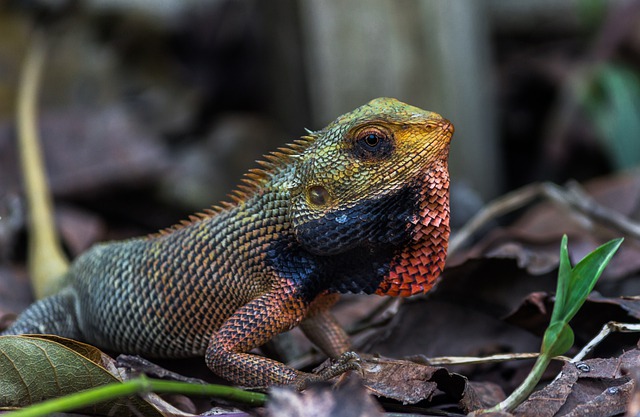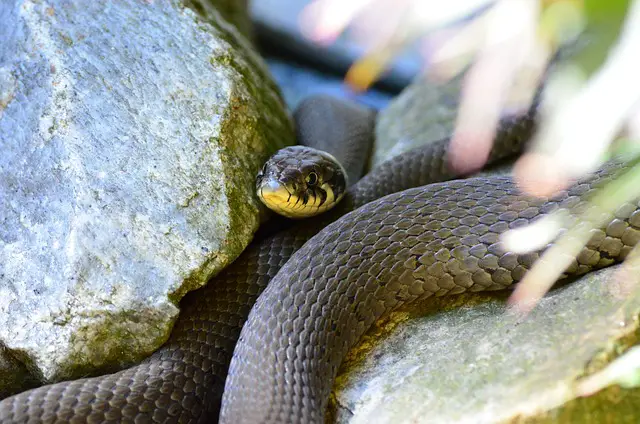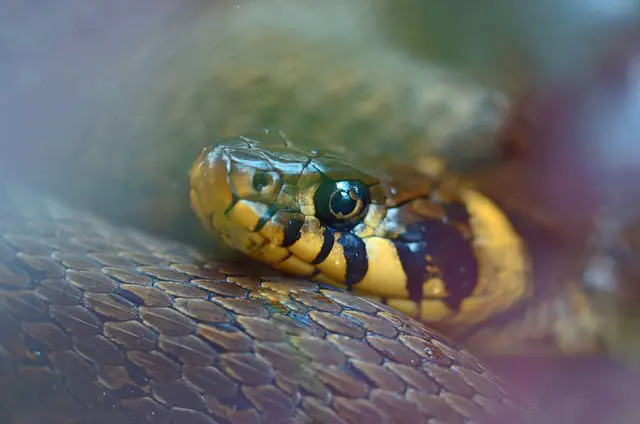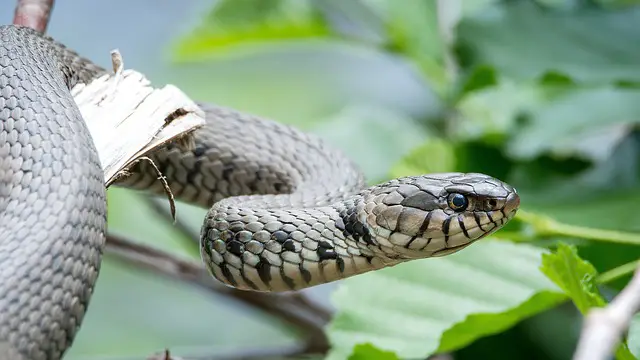If you’re in the market for an interesting exotic pet, there is not much that can beat a frog. These creatures are unique in many ways and taking care of them can be extremely rewarding. But if you are new to being a frog owner, you may be wondering what do pet frogs eat?
Frogs are carnivorous animals meaning that they eat meat so it is important to provide a selection of insects that mimic the frogs diet in the wild. Most commonly, owners will offer locusts and crickets, but there are other things you can use. It is important to supplement these insects to ensure that frog gets all the vitamins it needs to survive.
In this article, we will be exploring everything you need to know to make sure that your frog has a healthy diet and a happy life. We’ll also look at what not to feed your frog and the risks of offering unsafe foods.
What Should I Feed My Frog?
Depending on the species, frogs may eat a variety of animals. For example, land-dwelling frogs may eat several insects including crickets, spiders, butterflies, and even worms. If you have an aquatic species, then in the wild, these animals may also eat various invertebrates that live in the water.
If you own a much larger species of frog, such as a pac-man frog, then these animals will need to be given larger prey. For the most part, this will consist of small mammals, which can be disturbing for some people.

However, since this is important for the frogs health, owners should make sure that they offer the right kind of food or settle on a smaller species.
Frogs are opportunists meaning that they will eat anything that they can get their little froggy hands on. They’re not at all fussy and this makes feeding them relatively easy. However, since they are carnivores, their diet should be meat-based.
When feeding you frog, you should always use a calcium or vitamin powder on the prey. It is important to keep in mind that when offering live prey, the insects will groom themselves, removing the powder. For this reason, we would always recommend offering just the right amount of food in one sitting.
Types Of Frog Food
Since the diet of a frog is so varied, it is important to discuss the most common types of food. Let’s take a look.
- Crickets are perhaps the most common food for domestic frogs. This is because they are so widely sold. You can go into any pet supply store in the world and find crickets on sale so they often form an important staple diet for pet frogs everywhere.
- In addition to crickets, some pet stores will sell grasshoppers and locusts, although these are less common. If you can get hold of them, they provide a good level of nutrition for your frog and add a little variety to its diet.
- Mealworms are commonly found in pet stores across the globe and make another great diet staple for frogs. It is entirely possible to raise your own meal worms, and this is also possible with crickets.
- Some pet stores supply caterpillars and again, these aren’t as common but they can make a nice change for your frog when they are available. One thing that you should keep in mind is that some caterpillars can be quite large so you should only purchase those that are the right size for your frog.
- If you own an aquatic frog, you will need to buy bloodworms and brine shrimp as these will form an important staple part of your pets diet. Another option for water-based frogs are blackworms which are readily found in exotic pet stores.
- For larger frog species, mice are one of the most common foods. Pinkies are newborn mice and are commonly sold in pet stores. They can be brought live or frozen. You can also offer adult mice to bigger frogs. There is some debate among animal lovers as to whether it is acceptable to feed live mice because of the stress on the mouse. However, a lot of frogs won’t be interested in dead prey. This is a moral issue that will vary from owner to owner and you will have to take this into consideration.
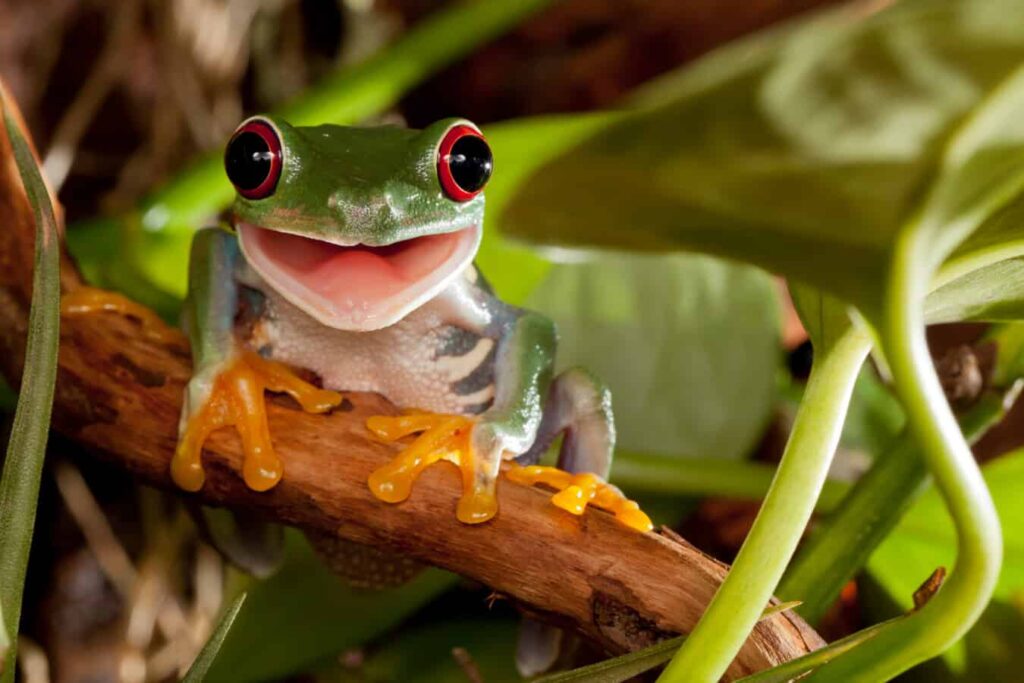
Is There Anything My Frog Can’t Eat?
Frogs are carnivores and therefore do not require fruits or vegetables. While these probably won’t cause any harm to your pet, they likely won’t show any interest in them. There are, however, foods that should be completely avoided for your frogs well being.
- Do not offer your frog any human foods or food that are intended for other domestic animals such as dog food or cat biscuits.
- Avoid offering wild-caught insects. While this can be tempting if there is an ample local supply, there is a risk that they may have fed on plants treated with pesticides, and these chemicals could be transferred to your frog.
- Never offer foods that are too large for your frog as they may pose a choking hazard. Furthermore, larger insects could bite the frog causing injury and stress.
How Often Do I Need To Feed My Frog?
Feeding a frog is vastly different to feeding more common domestic animals like dogs, hamsters, or rabbits. While these animals may eat several times a day, a frog can go much longer between meals.
This is common in reptiles and amphibians but the breed of your frog and its age will determine the frequency of its meals.
- Younger frogs may need to eat a lot more often. In some species, juveniles may need to eat as much as twice a day. This typically applies to frogs under 16 weeks of age and unlike their adult counterparts, you may need to leave a constant supply of food in the enclosure. As they get older, their need for food will slow down.
- Frogs with medium energy levels, which applies to most adult small to medium-sized species may eat every two to three days. Each frog is different and will require varying amounts of food but as a general rule, five crickets should be sufficient.
- Larger frog breeds with lower energy levels may not need to eat very often at all. These frogs might go a week or even two between meals. These are normally the species that eat mice.
Does My Frog Need Water?
It could be easy to assume that a frog doesn’t need water; how often do you see a frog drinking in the wild? But, despite this belief, your pet frog does need a constant supply of water.
Frogs use a process called osmosis to absorb water through the skin which is vastly different to the way that humans and other animals drink. This means that they need to be able to get their bellies into the water so there should be room for them to do this.
Alternatively, you could mist the frog regularly but this method can be difficult since the frog doesn’t have control over its water intake.
Any water that is offered to the frog should be treated with de-chlorination tablets which can be purchased from aquatic supply stores or online retailers.
Conclusion
Frogs will eat pretty much anything in the wild, so long as it is meat-based. From spider and slugs to butterflies and moths, these opportunistic hunters aren’t fussy when it comes to food.
For this reason, feeding a pet frog can be quite versatile and there are many foods that you can try.
However, it is important to make sure that the food has been supplemented with a vitamin powder and is the right size for your frog. You should also keep in mind that different sized frogs may require food more or less frequently so it is vital to alter the menu according to this.

